Seeds of Change
Combine large, bold images with the beautifully crafted words of your story.


Diabetes, food insecurity, and homelessness are inextricably linked. A group of passionate individuals have come together to create a tiny urban farm that is transforming lives and finding solutions to these systemic problems. Meet the people behind the vision.

AT 8:30 AM ONE DAY IN MARCH 2022, FIVE WOMEN WALKED THROUGH THE GATES OF WASATCH COMMUNITY GARDENS’ FARM, a small piece of fenced-off land on the outskirts of downtown Salt Lake City. Buttressed by an overpass to the west, a railway line to the north, and The Gateway mall to the east, the farm was tucked in a largely industrial landscape long ruled by blight.
Just inside the farm’s entrance, the women passed by a dark, glassy rock of obsidian that “clears negative energy,” encouraging them to leave their troubles at the gate. With its rows of raised beds in need of weeding and planting and endless flats of tomato seedlings soon to sprout, the farm awaited spring—and the Green Team.
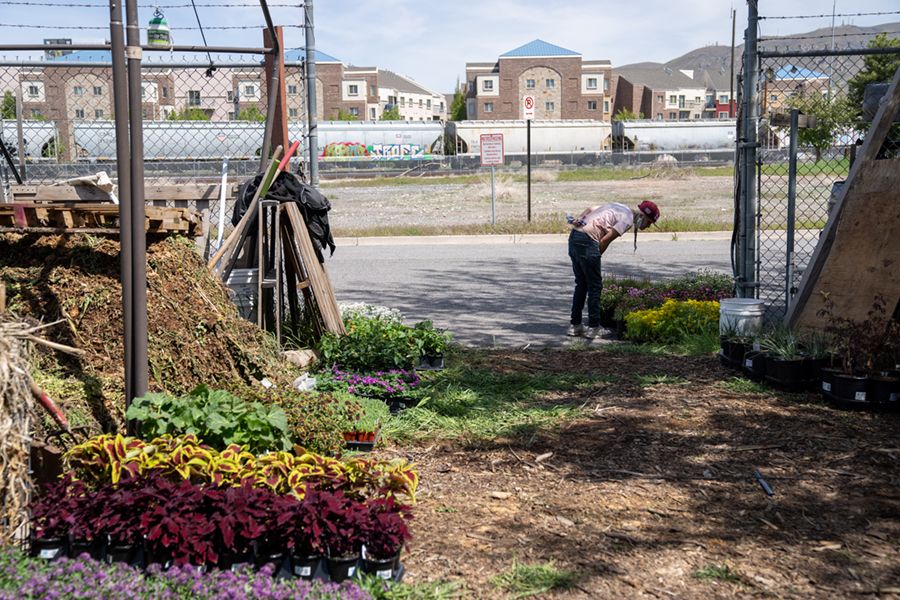
Hired part-time, the women of the farm’s Green Team work the soil, cultivating and delivering young plants and vegetable seedlings to Utah’s biggest plant sale in May and fresh vegetables to local homeless shelters in the summer and fall.
They were bound by common threads: all had experience with homelessness. Some were survivors of domestic violence. None had ever worked on a farm. They would be paid above minimum wage, but work was only part of the package. As they nurtured these seedlings, the farm’s small but passionate staff would support them through training, résumé development, finding work, and navigating local bureaucracy to achieve stable housing. “People and plants are very similar,” farm staff told them. “All they need is the right environment to thrive.”
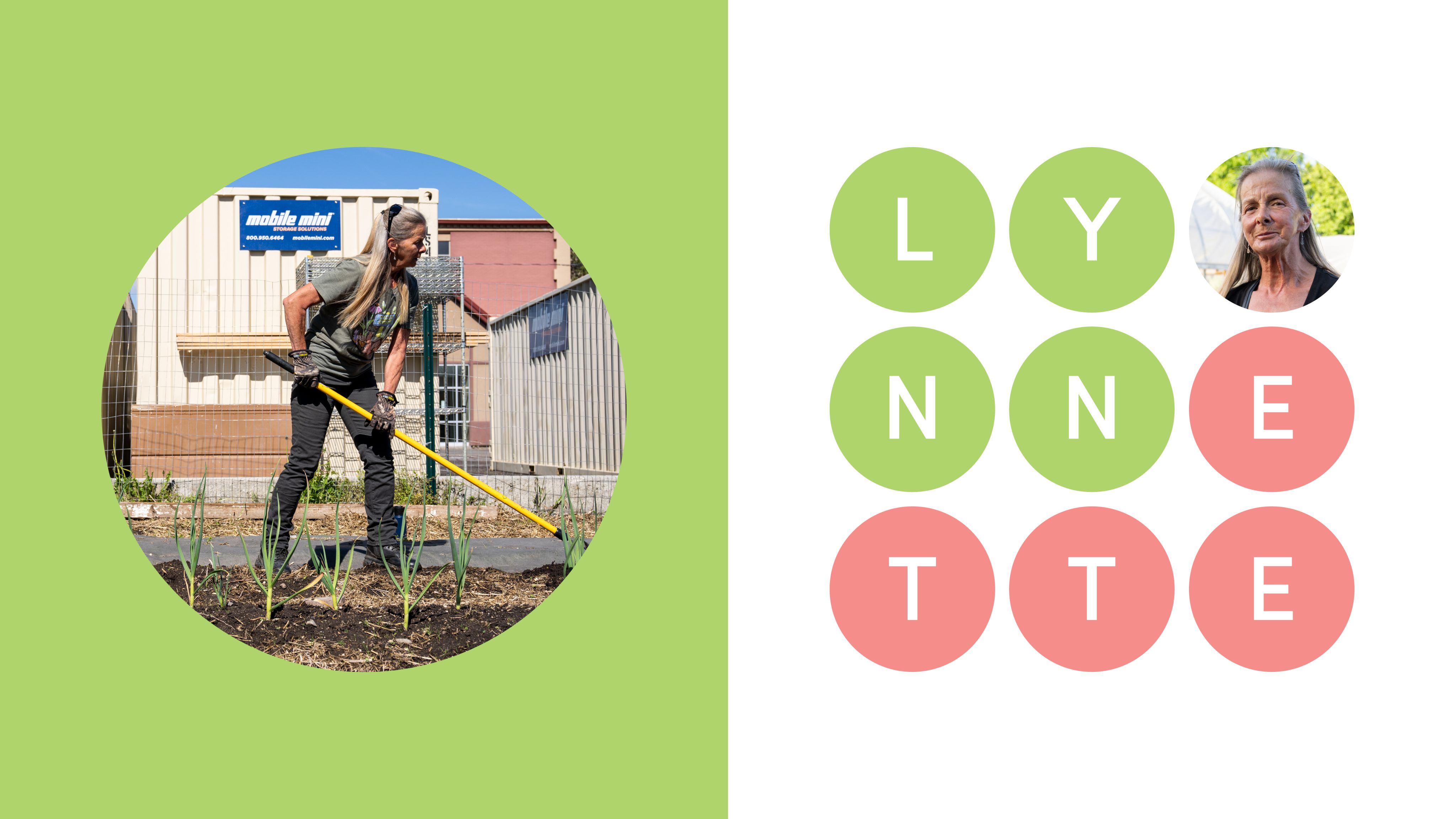
FROM HOMELESS TO MENTOR
LYNNETTE BURN REMEMBERS THE DAY THAT CHANGED HER LIFE. In spring 2017, at 58 years old, she found a note on her bed at The Road Home, a homeless shelter in Salt Lake City where she’d been living for eight years. “If you want to go work hard, there’s a lady doing interviews,” it read. The prospect of a job—even a part-time one—excited her.
At the interview, Burn met community organizer Camille Winnie, then director of community services at SLC’s Downtown Alliance, who asked her if she had any gardening experience. “I know how to weed,” said the twice-married mother of five. As a child, that was the one thing her beloved father had let her do in the garden of their West Valley City home. It had been her father’s unexpected death in 1997 that broke something inside Burn, plunging her into crisis. “I went off the deep end,” she said. “And just let it get deeper and deeper and deeper.”
At 33, she left her husband to live in an apartment. When she lost her job of 13 years working at a payroll company in Draper, homelessness wasn’t far behind. After couch-surfing and spending the last money she had on motels, she walked the streets with nothing more than a backpack and a stroller to push Eddie, the American Eskimo dog that her sons had given her. For the next eight years, she struggled with bad choices, including involvement with dangerous, predatory men. Eddie was her rock, her emotional tether through the turbulence of homelessness and then life in The Road Home’s downtown shelter.
Burn turned up for her first day of work at the farm on a bitterly cold day in April 2017. She had no idea what she was getting into. After only a few hours, she was barely able to move her half-frozen fingers. She decided to quit. As she was gathering her belongings, volunteer Eve Jackson said, “Don’t go. It’ll get better, I promise you. You’ll be warm and sweating hard under the sun soon enough.”
Jackson’s gentle manner brought Burn comfort. If she worked hard, the Green Team promised her a path to housing, a chance to close a door behind her, and—for the first time in as long as she could remember—the feeling that she and Eddie were safe. How could she turn her back on that?
At the end of each day that spring, bone-tired, Burn walked back to the shelter, pushing Eddie in his stroller. Even though the shelter remained as chaotic as ever to navigate, she noticed that she felt taller as she walked into the lobby. One day she was planting seedlings in rows; a few weeks later, she was harvesting and taking produce to the shelter, where people lined up for their fruit and vegetables.
Still, things weren't always easy. Burn remembers being surprised by how her body reacted to dining on produce during lunches at the farm. After years of eating convenience store food and canned items from shelter pantries, her body initially rejected the nutrition-rich diet. Her stomach was constantly upset, leaving her feeling unwell for several months until she got used to the fresh fruits and vegetables.
But now that she had work and was doing something productive with her life, her self-confidence had changed.
Farm staff noticed. At the end of the 2017 season, they talked to Burn about her future. Would she join the farm on a permanent basis? She could help women like herself adapt to the farm and get the most out of it. Burn gratefully accepted, moved by the offer and the prospect of building a stable life.
One of the key goals of the farm was to help women navigate the challenges of getting a rent-subsidized Section 8 voucher from Salt Lake County and finding affordable housing. But even with a job and the support of farm staff and case managers at The Road Home, it took Burn three years to find an apartment she could afford. When she finally moved into her downtown studio and closed the front door for the first time, Eddie at her feet, she issued the biggest sigh of relief as she sank back against the door.
Fast forward to Spring 2022. As the sixth woman riding her bike through Wasatch Community Gardens’ gates, Lynnette Burn in many ways embodied the program’s promise. She lives in her own downtown studio. For the past six years, she has worked as a mentor and guide for each year’s new Green Team cohort, becoming a cornerstone of the program. She is approachable, understands the women’s experiences and concerns, and provides key support, especially at the start of the season when they are trying to feel their way forward.
TANGLED WEEDS AND INTERMINABLE ROOTS
TWO YEARS LATER, BURN HAD LEARNED SO MUCH about bed preparation, planting, cultivating, harvesting, and nutrition that she was called upon to apply it to another place in need—Palmer Court, a long-term residence for people with histories of chronic homelessness and disabilities. A staff member at The Road Home had started a garden on Palmer Court’s property several years before. But like everything else in Spring 2020, it needed help.
The timing was perfect. COVID-19 had quickly accelerated food insecurity for community members, and researchers from University of Utah Health—including Shannon Jones, MS, an assistant professor in the College of Health—wanted to help. They knew who to turn to, as well—Burn was ready to spread her wings as both an urban gardener and mentor.

The small piece of land at the back of Palmer Court was half-hidden from view by a line of containers. It backed onto State Street, from which it was separated by a heavy black metal fence. Given over to weeds and refuse, the would-be garden was largely ignored by residents, except for a couple and a single man who each worked their own patch.
Despite offering labor and advice, initially those three residents were hostile to outside help—and each other. “Don’t touch my shovel,” one snapped at the other. Conflict management was just as necessary as gardening. Suspicious residents watched Burn and her colleagues from Wasatch Community Gardens’ Farm turn up day after day for a few months to clean away garbage, trim bushes, pull weeds, and prepare beds for squashes, peppers, tomatoes, and potatoes. It took three weeks just to clear one tiny patch.
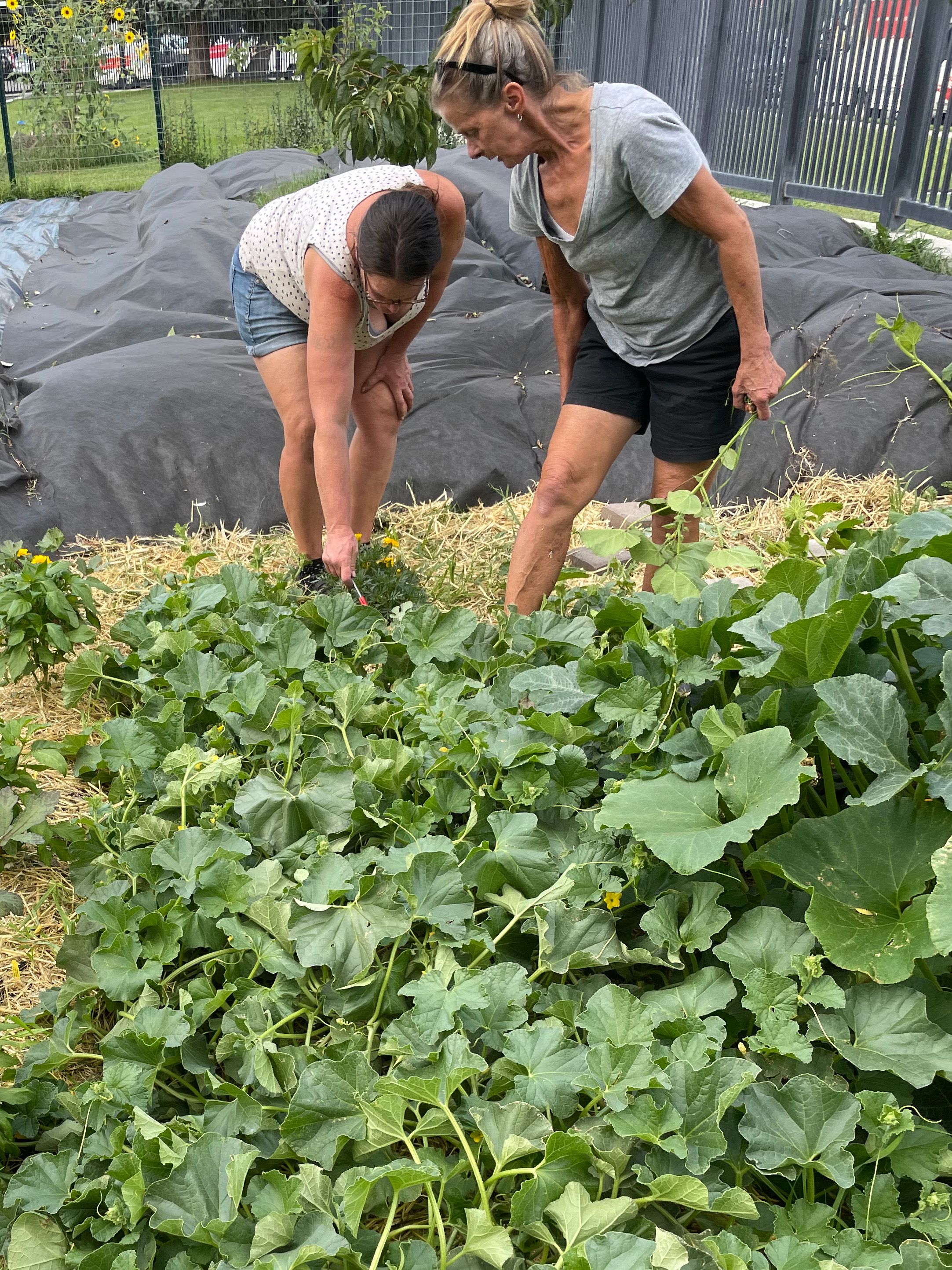
By the end of that spring, the hostile resident gardeners were sharing tools. That was the point of the project, Burn felt—trying to break down barriers. She knew she was starting the intended dialogue when one of the residents left her a voice mail. “I don't have internet,” the resident said. “I just got this squash out of the garden, and I don't know how to cook it. Could you look up a recipe and call me back?”
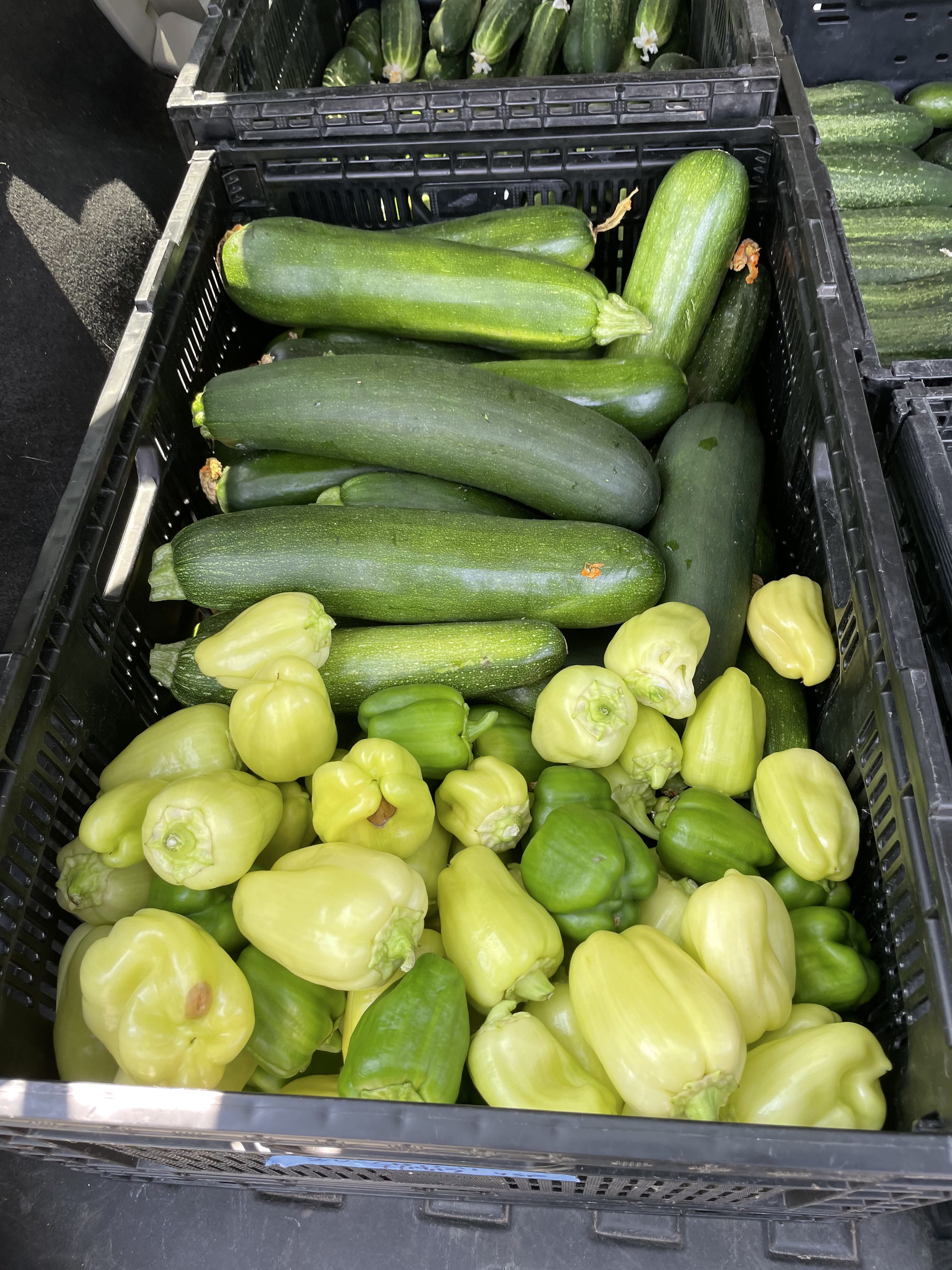
PROTÉGÉ NO MORE
AS MANAGER OF THE PROJECT, BURN ALSO HAD MUCH TO LEARN. Every week, she peppered James Loomis, her manager at Wasatch Community Gardens, with questions. Can anyone troubleshoot the garden sprinklers? What kind of soil should we use? When does this varietal bloom?
Burn relied on staff at Wasatch Community Gardens as her go-to resource in 2020, but by the second season at Palmer Court, she wasn’t asking many questions. In August 2021, an open house at Palmer Court showed off the newly refurbished and upgraded pantry and garden. Burn gave tours to visitors dumbfounded at how, instead of five identical rows of beets, there was now a panoply of brightly colored vegetables and fruit filling a verdant, festive space.
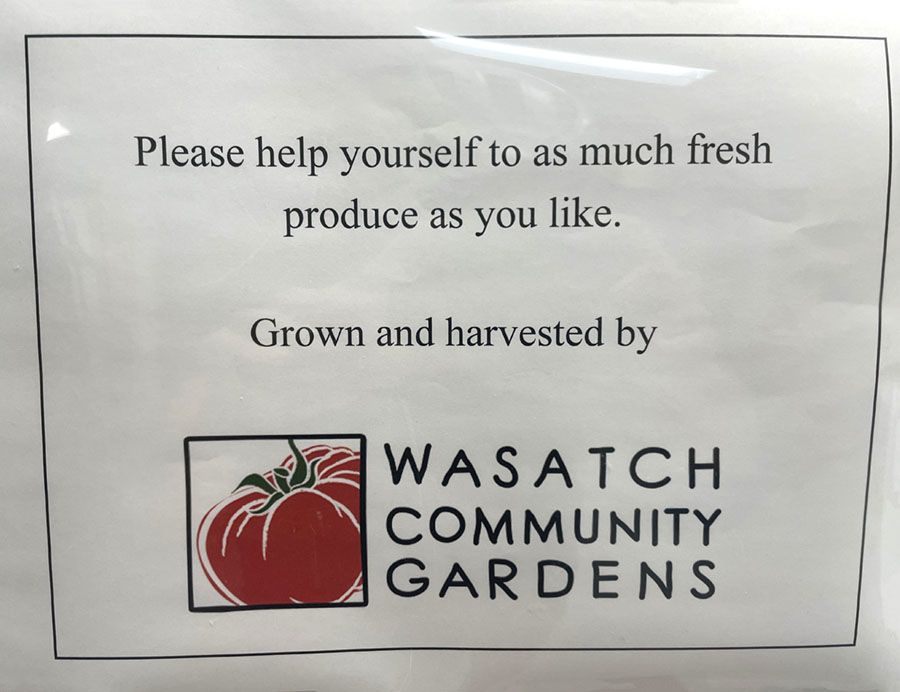
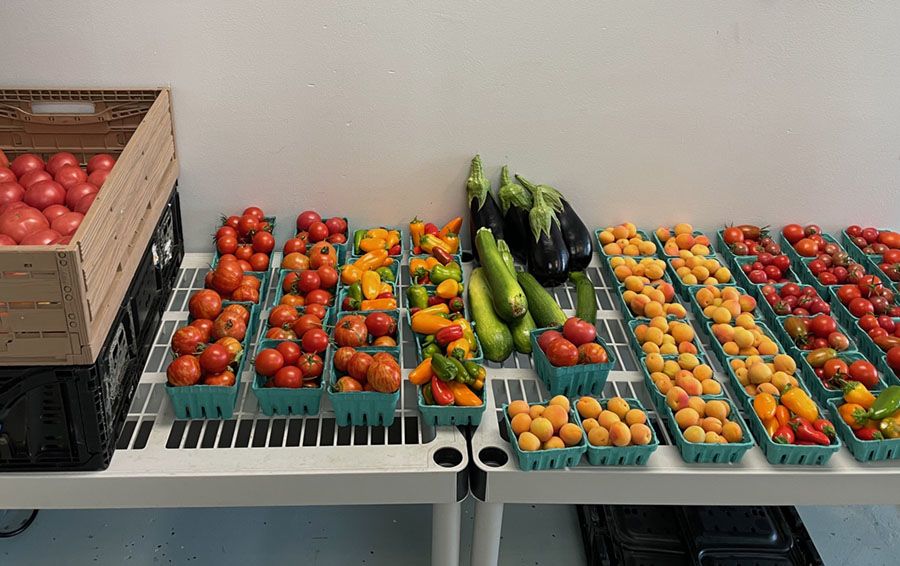
Burn had taken the leadership role seriously, running the garden solo that year rather than seeking assistance or oversight from her supervisors. When volunteers from the University of Utah College of Health showed up to help, her passion for gardening took over. She showed them “the hard weeds” they needed to come to grips with, along with “the tangled-up weeds with roots that go on forever and forever.”
“This beautiful garden,” Burn called Palmer Court’s tiny lot in those early days. Faced with work, including weeding, soil turning, fertilizing, planting, and the redistribution of wild strawberry plants, herbs, and thistles, she still saw the bounty that the soil and sun would eventually yield. Smiling, she says, “It will be beautiful again.”
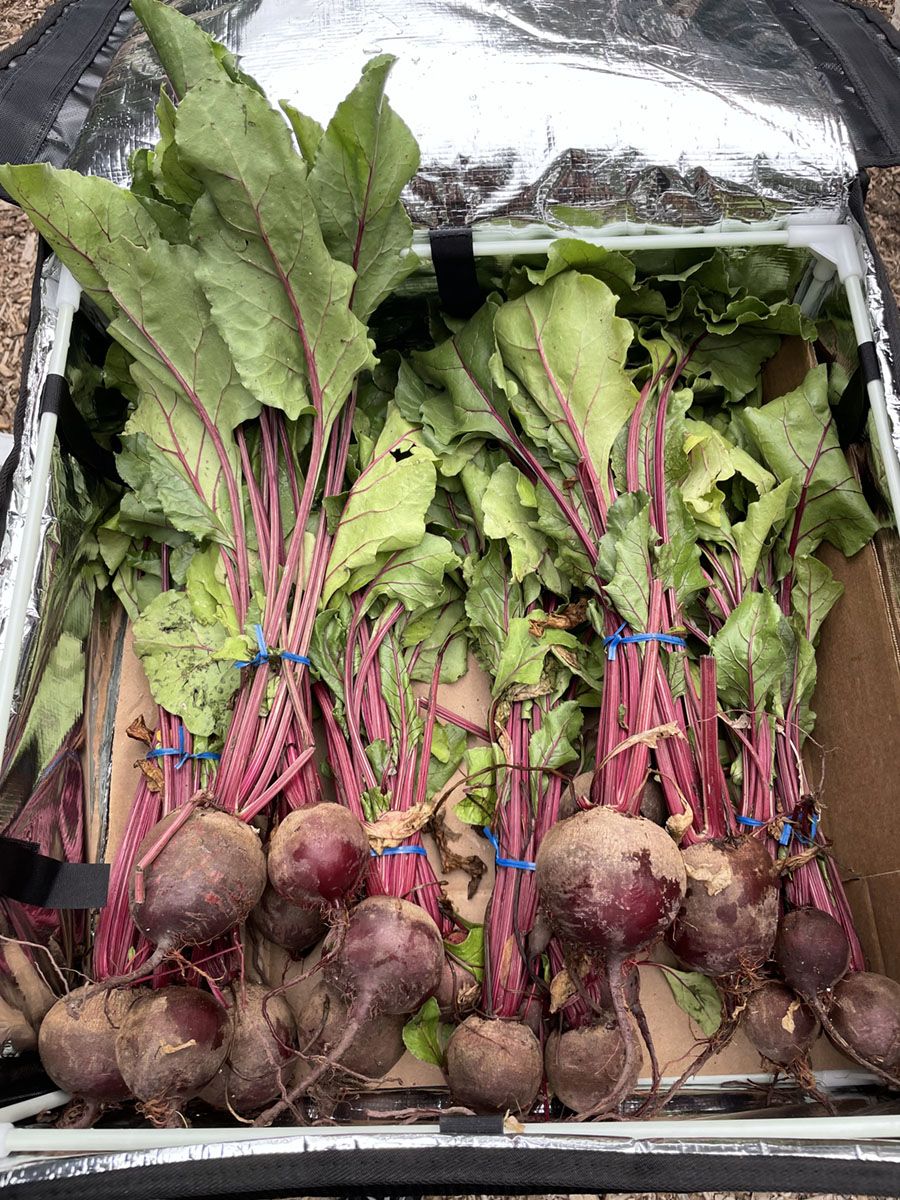
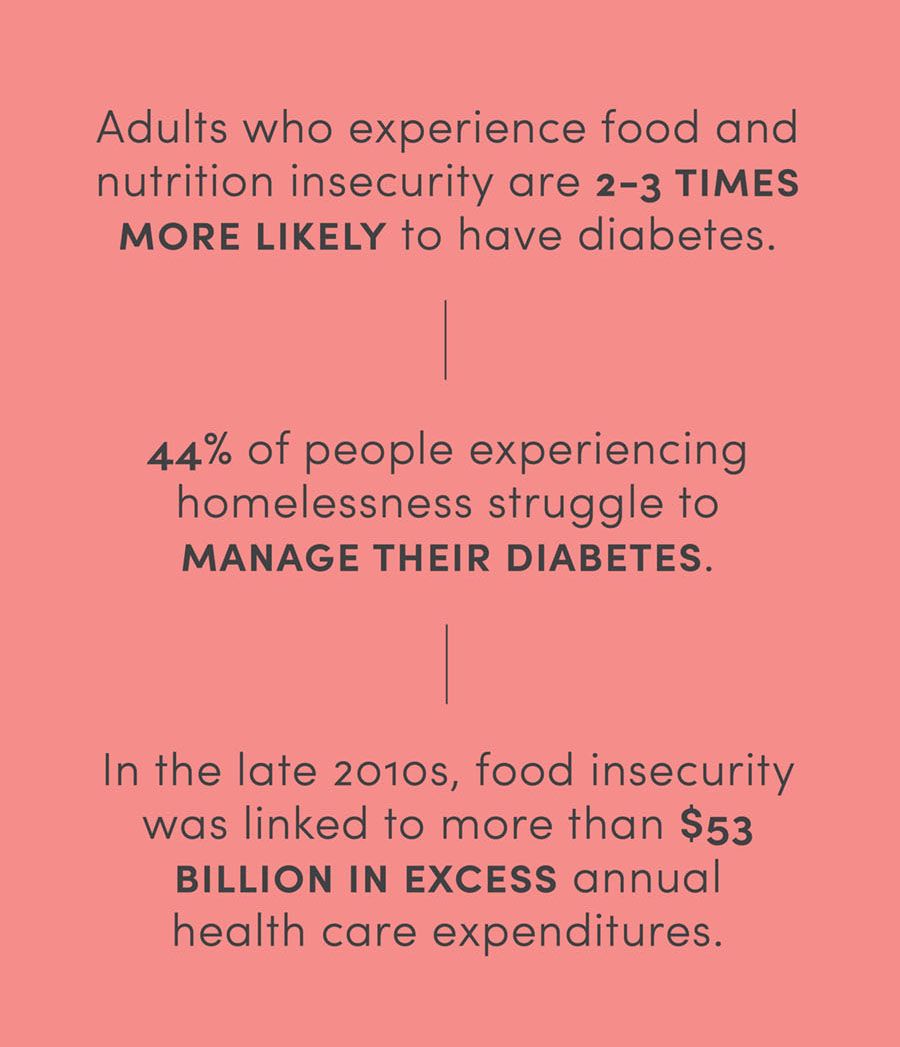
Data sources:
1. Food and Nutrition Insecurity and Diabetes: Understanding the Connection (CDC, August 2022)
2. Diabetes and Hypertension Prevalence in Homeless Adults in the U.S. (American Journal of Public Health, February 2015)
3. State-Level and County-Level Estimates of Health Care Costs Associated with Food Insecurity (Preventing Chronic Disease, July 2019)

The vision all along for Wasatch Community Gardens’ Farm was to help women like Lynnette Burn “get their mojo back,” explains director of agricultural operations James Loomis. A zealous educator, organic small-farm consultant, and advocate for regenerative agriculture, Loomis was hired by Wasatch Community Gardens in 2016 to design and build a farm program that would safely support vulnerable, unsheltered women. He wanted to expand their idea of time from fighting for survival 24/7 to planting seeds and waiting a week to see the first sign of a seedling poking up from the soil.
After opening the farm in August 2016 on a 1.4-acre lot two blocks from a downtown shelter, Loomis quickly realized that the women needed more support than just finding work and housing. Mostly in their 50s with long histories of abuse, they needed a safe place to reignite their own self-belief. He became farm manager and de facto therapist, emotional support, crisis manager, and friend.
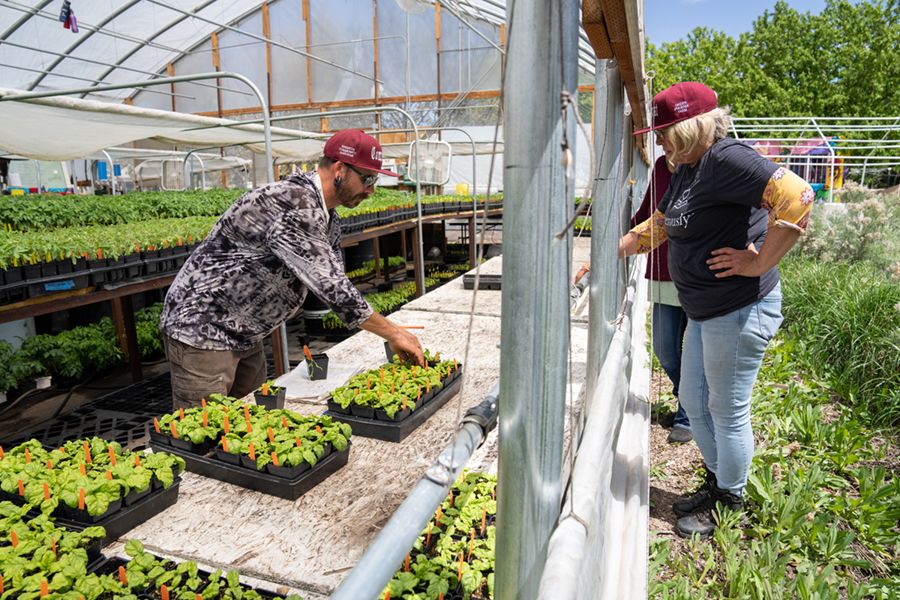
“Everything is centered around the women,” Loomis says. “The plant and food production are secondary outcomes. First and foremost is stability, safety, and self-esteem for the women. That’s what we are building.”
WALKING TALL
THE FIRST TIME LOOMIS MET LYNNETTE BURN, SHE’D ONLY WORKED AT THE FARM FOR A WEEK. He bounded up to introduce himself with his booming voice and florid facial hair. She had been weeding and went to wipe her hands on her jeans.
“No, no,” Loomis told Burn. “That’s the farmer’s hand. You’re working in the earth, in the garden. Your hands need to be dirty.”
That kind of transformation went hand in hand with helping the women achieve housing. Loomis knew how important it was. Without a stable address, they couldn’t receive crucial mail notifications from the housing department. Without transportation, they couldn’t make it to a meeting with housing staff.
In recognition of just how daunting such challenges were to overcome, one year—in Loomis’ typically unique style—he promised to wear a dress to work on the farm the day every single cohort member had secured the voucher. When the last woman in the group got hers, the next day Loomis came to work in a black dress, hat, and accessorized jewelry. “It’s nice and breezy,” he proclaimed as he worked.
His work was serious, too. The first few years at the farm, women who had found security and support were often reluctant to leave, so helping them transition to a new job at the end of the farm season was difficult. Loomis learned to address such concerns at the start of the growing season, helping team members envision a future of stability through employment and, ultimately, housing.
In an agricultural journey rife with creative and transformational imagery for the six women, composting brought its own insights as well. The biologically supercharged compost pile managed by the cohort saw regular attention. Loomis measured the internal temperature of the compost pile—it needed to be 131° Fahrenheit for 15 days and turned a minimum of five times.
“Let’s think about what you want to compost,” Loomis said, pointing to scraps of paper on a table to write down compostable thoughts. “Anything that you want to let go of. I’d love for those things to go into the new core. Then we’ll cover it and get those things embedded and transformed into something valuable.”

WELCOME TO “THE FARMILY”
LAMOON LUIA HAD NEVER KNOWN A HOME. The 19-year-old had been homeless all her life. Born in Florida, her family stayed in hotels or people’s homes as far back as she could remember. Her family moved again and again because of poverty. “We just couldn’t keep a stable home,” she said. Food was standard road fare: a hot dog or burrito, chips and a drink bought from a gas station for dinner, then eaten in a park.
Lamoon went to 16 different schools. By the time she transitioned from junior high to high school, she and her family were living in The Road Home’s shelter. When she was younger, she was embarrassed by the situations that poverty put her in. But as she grew older, she felt it taught her humility and gave her the desire to understand others. At the same time, she wanted people to see her as more than her life experience. Living in The Road Home for two years made her both painfully aware of how apart from society she was while also underscoring how she would have to learn to navigate life herself.
Upon graduation, she decided to study her own home remedies, making scrubs and toothpaste for herself and her family. Then she apprenticed with a non-profit dedicated to growing organic produce in urban and suburban backyards. At 19, she started working full time for a thrift company, sorting clothes in a warehouse. She moved in with her aunt but had no sense of direction.
“I was just kind of winging it on survival mode,” she said. She wanted to start her own business, pursuing her own ideas rather than disappearing into low-income work. At Wasatch Community Gardens’ Farm, she thought she’d learn about sustainable cultivation and meet women who understood her journey. That could give her the chance to take control of her life and simply be present.
She discovered a “farmily,” as staff called it, of women whose experiences in some ways mirrored hers. One had a daughter who didn’t talk to her, much like Lamoon didn’t talk to her mother since she’d left home. Another shared her passion for meditation and reading.
Those first weeks of 2022’s growing season, Lamoon and her peers planted seeds in black plastic starters filled with soil, worm castings, and phosphate, watching for that first tiny green sprout. There was a natural cohesion to the six-member cohort. They’d gather on the curb to smoke and chat on breaks and support each other in the gardening processes, shouting “Kaizan”—Japanese for continual improvement—each time a suggestion resulted in greater efficiency.
By April, the cohort was nurturing seedlings into young plants, learning about their own strengths and weaknesses, and sharing their music with each other—Lamoon liked playing reggae. On Wednesdays, they worked on their individual plans. Lamoon improved her time management skills, sharpened up her resume, and made inroads getting health care and food stamps. Lamoon also researched the type of housing that would work for her before pursuing a voucher.
ONE FLAT AT A TIME
WHEN JAMES LOOMIS ASKED EACH WOMAN TO COMPOST SOMETHING THEY WANTED TO LET GO OF, LAMOON WROTE “I AM DIVINE,” placing the thought on the steaming compost pile. By composting that simple, declarative sentence, its energy would enter into the plants to render them divine, she thought. The women discussed naming the pile. They had built their own four-foot-high totem, digging in with pitchforks to turn it over and over, one more example of their remarkably quick cohesion as a sustainably savvy team, Loomis thought.
They wanted to recognize that they hadn’t needed a man to help them build the steaming, densely rich pile before them, so they named it the “No Bro Pile,” high-fiving each other to celebrate the baptism.
After a day at the farm surrounded by that energy, Lamoon found herself working on writing a book about “the divine feminine.” She was learning to embody that divinity and the energy that comes with it—and setting an example for her family along the way.
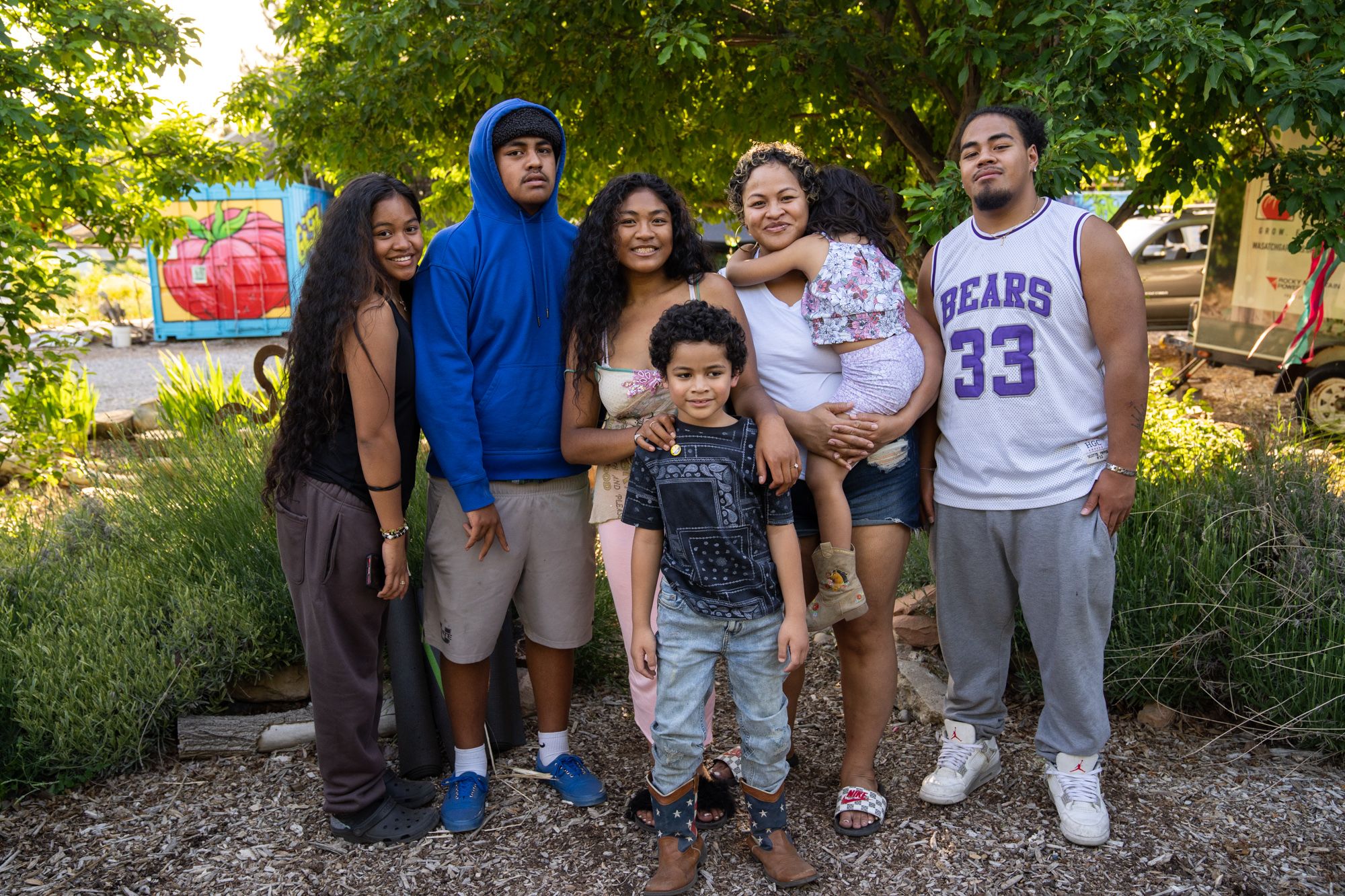
Lamoon (center) and family celebrating her June 2022 Green Team graduation.
Lamoon (center) and family celebrating her June 2022 Green Team graduation.

UNDERSTANDING THE ROOT CAUSE
FOOD INSECURITY AMONG THE HOMELESS WASN’T ALWAYS A FOCUS FOR SHANNON JONES, MS, an assistant professor at the University of Utah College of Health. She originally set out to help prevent diabetes through education about healthy eating and exercise. It’s estimated by the Centers for Disease Control & Prevention that one out of every four health care dollars is spent on caring for people with diabetes—a total of $327 billion per year. If caught early enough, the most common form of diabetes, type 2, can be prevented. But recent research shows that 44% of people experiencing homelessness struggle to manage their diabetes.
Jones runs the statewide child prevention programs for the Driving Out Diabetes: A Larry H. Miller Family Wellness Initiative. Larry Miller died from complications of type 2 diabetes when he was 64 years old. His wife, Gail Miller, is passionate about reaching people—particularly under-resourced people in Utah—to prevent them from suffering from this devastating disease.
When Jones and a small team of her graduate students began visiting homeless shelters in Salt Lake County, it became clear that the one-size-fits-all solutions generally used in diabetes prevention did not take into account the individual needs of this population. There were so many issues upstream that needed to be tackled first—especially increasing access to healthy food.
The students discovered that 95% of clients at The Road Home’s Midvale Family Resource Center had been food insecure within the last 12 months. Simply put, they didn’t have enough food to live a healthy life. What food options they did have were badly illustrated: dozens of donated donuts at the front desk and an emergency food pantry that had no fresh produce. Jones points out that while the U.S. Farm Bill provides $100 billion in subsidies for commodity crops such as wheat, corn, and soy, quality fruits and vegetables remain prohibitively expensive for low-income communities.
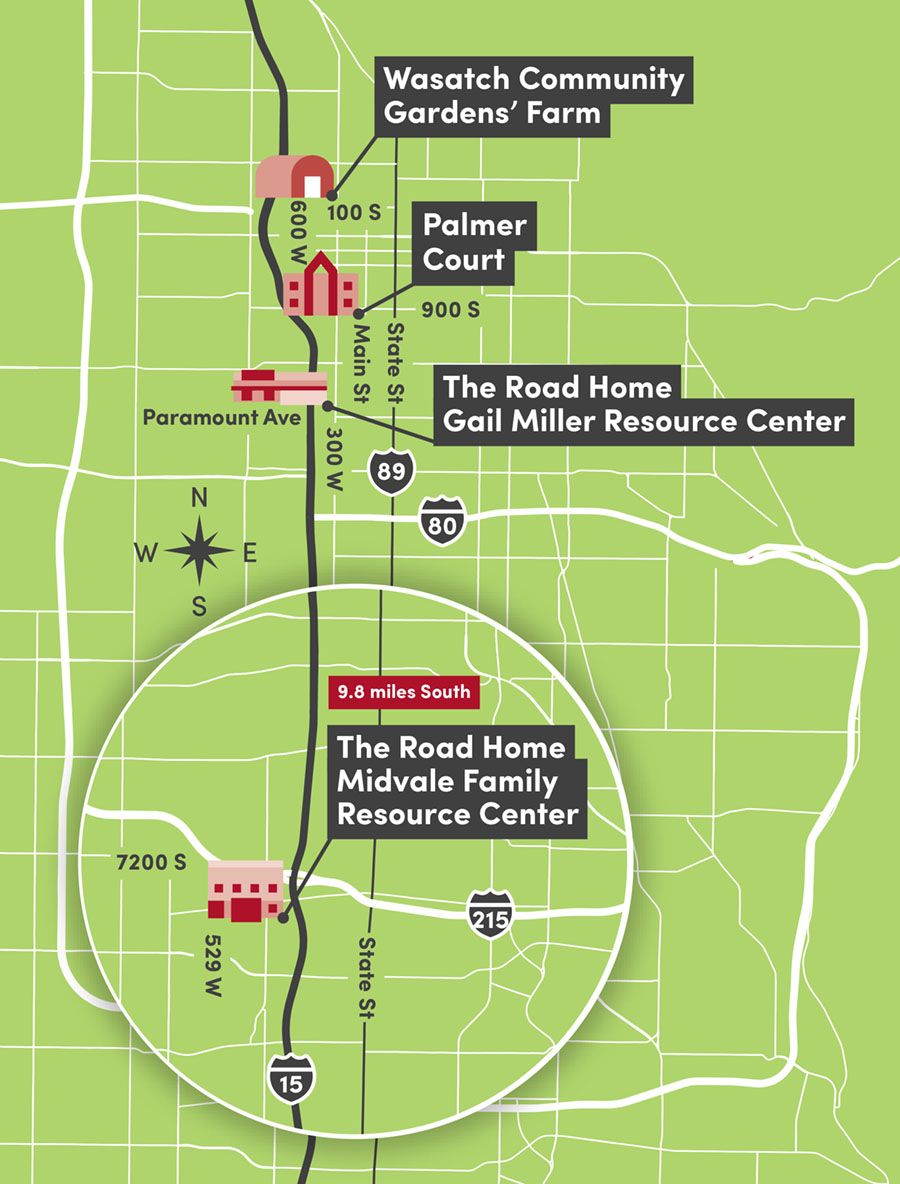
When Jones’ students offered carrots, apples, and nuts to long-term residents at Palmer Court, they discovered another problem—their teeth. Chewing hard foods was difficult to impossible for people who’ve had little to no dental care for most of their lives. Many of the residents had painful dentures or missing teeth and wanted softer foods like white bread or rice that lacked nutritional value. Jones and team partnered with the U of U School of Dentistry and The Road Home to provide free dental work to residents through a grant from the Junior League of Salt Lake City.
Visiting the shelters, Jones also realized that providing nutrition education to people who can’t afford healthy food and have nowhere to store or cook food might actually make things worse—physically and psychologically. For example, young single mothers with limited education and resources make up most of the families in homeless services systems. They already face a deeply distressing environment at crowded shelters. Adding pressure to provide their kids with healthy food options on a limited budget would likely increase stress hormones, which in turn can alter the way food is processed and stored by the body, Jones explains.
Increasing access to healthy food isn’t easy, but as Jones learned, it’s worth the effort—it can help prevent diabetes and many other chronic diseases. It’s estimated that food insecurity is linked to more than $53 billion in excess health care expenditures every year due to the high levels of added sodium, fats, and sugars in processed foods. “Health, wellness, and stability are not going to be achieved if folks have nutrient deficiencies,” Jones says. “That means they don’t have energy, their immune system is weak, and they’re unable to cognitively process things.” And, Jones adds, if you are food insecure—regardless of income or employment status—you are more likely to experience domestic violence.
MAKING CHANGES UPSTREAM
JONES FOCUSED ON TWO KEY AREAS TO INCREASE FOOD ACCESS. First, improve the infrastructure of pantries like the one at Palmer Court by providing free commercial refrigerators, freezers, shelving, and cooking supplies. Second, connect those reconfigured pantries with a steady supply of fresh, local, organic produce to transform food options.
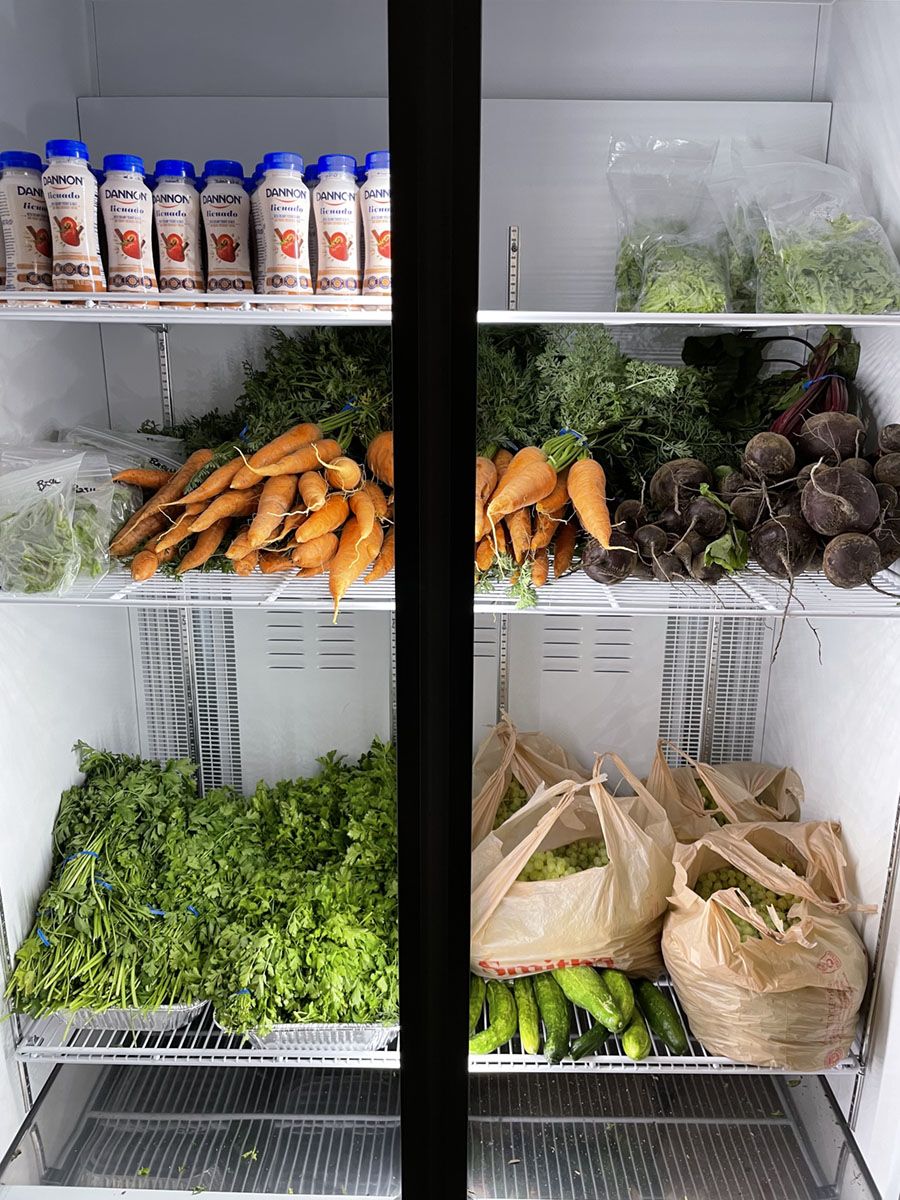
To achieve the latter goal, she partnered with James Loomis and Wasatch Community Gardens’ Farm. In Loomis, she found both a colleague and a friend—someone who is as comfortable geeking out over the details of permaculture and compost production as he is carefully cultivating safe spaces for vulnerable women. Working together, Jones delivers free produce to two shelters (Palmer Court and The Road Home’s Midvale Family Resource Center) every week during the growing season.

Building the farm program had taken a lot of trial and error, with the staff listening to and learning from the women they sought to serve. By the beginning of 2022, staff felt the farm was hitting its stride, including receiving its organic certification. Eight of the nine women from the 2021 Green Team had stable housing, and seven of them had found full-time employment. The farm had also provided 4,700 low-income family members with 42,000 free organic food donations, equivalent to $105,000.
Every spring, Jones brings her graduate students and future dietitians to the farm to show them at a micro level an example of the systemic change that is needed. Seeing the farm firsthand helps them understand how it’s a long-term investment in the community. “If funders at a local level can direct money into these types of programs,” Jones explains to students, “the outcomes that we can potentially have on individual lives would be really impactful.”
DESIGNING A SUSTAINABLE SOLUTION
WHILE A SMALL URBAN FARM’S IMPACT ON HOMELESSNESS AND DOMESTIC VIOLENCE IN UTAH MIGHT AT FIRST SEEM SMALL—transforming the lives of a single-digit cohort of women each year—its impact on people like Lynnette Burn is immeasurable. The farm brings together a network of passionate individuals and dedicated non-profits to work together to address some of the most entrenched social issues.
It also inspired Jones and her colleagues from across the University of Utah to apply for the annual Civic Innovation Challenge Grant funded by the National Science Foundation (NSF). Their proposal was to turn the farm into a resource hub to meet the needs of food-insecure Utahns experiencing homelessness or severe housing insecurity. It would provide them free organic food, as well as the services and community connections not yet integrated into the homeless services system as a whole. In essence, it would be a one-stop shop designed by people experiencing homelessness.

Last October, the team was awarded $50,000 to research and co-design the first IFARM Hub, which stands for Intersectional Food Access Rights for Marginalized Communities. One of the things that excited Jones the most about the grant was that Loomis and Burn would be full research investigators. “We want to make sure we are recognizing their expertise and leadership,” Jones says. They will collaborate with faculty who have been conducting research for more than 20 years, including Jeff Rose, PhD, assistant professor in the College of Health; Sarah Canham, PhD, associate professor in the College of Social Work; and others from the College of Architecture & Planning.
The team, which includes graduate students and people experiencing homelessness, co-defined unmet needs and came up with solutions that draw on the life lessons of people like Burn and women on the Green Team. Jones knew that university researchers working alone would never be successful without their insights as advisors on the grant.
In her grant application, Jones described Burn as “a mother, grandmother, team leader, and lived experience expert,” with a decade of experience in Salt Lake County’s homeless systems. Jones also wanted Burn to share some of those experiences with her graduate students. “I only have my GED,” Burn said to Jones. “I can’t tell graduate students what to do. They’ll think I’m dumb.” Jones replied, “I want you to share your knowledge and receive the respect and recognition you deserve.”
Too often, small ambitious ideas fade away when grant funding ends. But this proposal is different. Baked into the plan is systemic change. “We want to build community and create programming that is self-sustainable and economically viable,” Jones says. It’s a model where community members are not just receiving charity but rather working together to meet their own needs.
The co-design process has been completed, and the research team has applied for a highly competitive stage-two grant from the NSF, which only hands out 20 awards nationally each year. As they await a decision, Jones and the team continue to seek out other funding. Jones feels this could be a transformative model nationwide. “Can we scale this and do it across the country?” she wonders. “That’s the hope.”
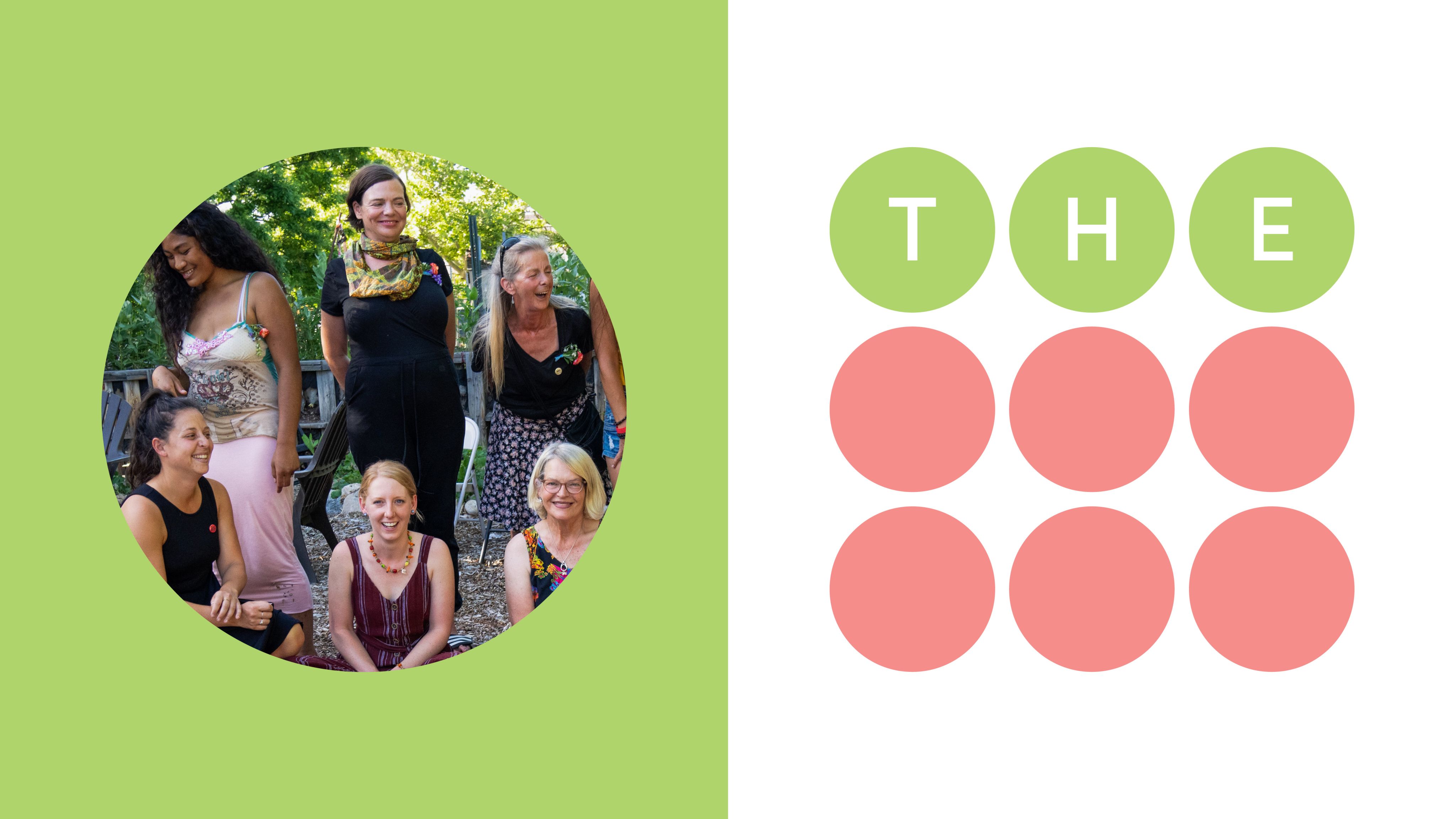
At Wasatch Community Gardens’ Farm, each day begins with movement, yoga, and meditation, all designed to encourage healthy habits and connections between the team. The farm’s consistency and predictability also helped reduce the women’s anxiety and support their success. On Mondays, they take care of life outside the farm while leadership meets to plan the week. Tuesdays, Thursdays, and Fridays are workdays. That leaves Wednesday, known as Nourish Day.
Wednesday mornings, the cohort sits in a circle, creating a space for the women to connect with each other, let their guard down, and be vulnerable about the challenges they face. This is followed by what farm staff call “a curriculum designed to help draw out key social, emotional, and thinking skills,” such as how to rewire the brain for positive thinking. Then, there are technical job skill sessions, resource connections, and, in the afternoon, individual meetings about housing needs, SNAP benefits, or Medicaid paperwork.
With this structure and support, 2021’s cohort had a highly successful year:
- 9 women worked at the farm for 10 months
- 89% of them achieved stable housing and 78% reliable employment
- The farm used 37% less water than the average vegetable farm in the Western U.S.
- The farm yielded 17 times the average of other vegetable producers
- Compared to an average acre that produces just under $6,000 of food value, the farm generated $110,000 worth of value on .81 acres under cultivation
- That bounty provided 4,700 low-income family members at Palmer Court and other shelters with 42,000 free organic food donations
The 2022 cohort had its own capstone to look forward to. After nurturing seedlings into 88 varieties of tomatoes, 128 varieties of other vegetables, and 40,000 plants for Wasatch Community Gardens’ annual Mother’s Day plant sale, the crew had to load all those flats on to U-Haul trucks to be driven from Wasatch Community Gardens’ Farm up to Rowland Hall.
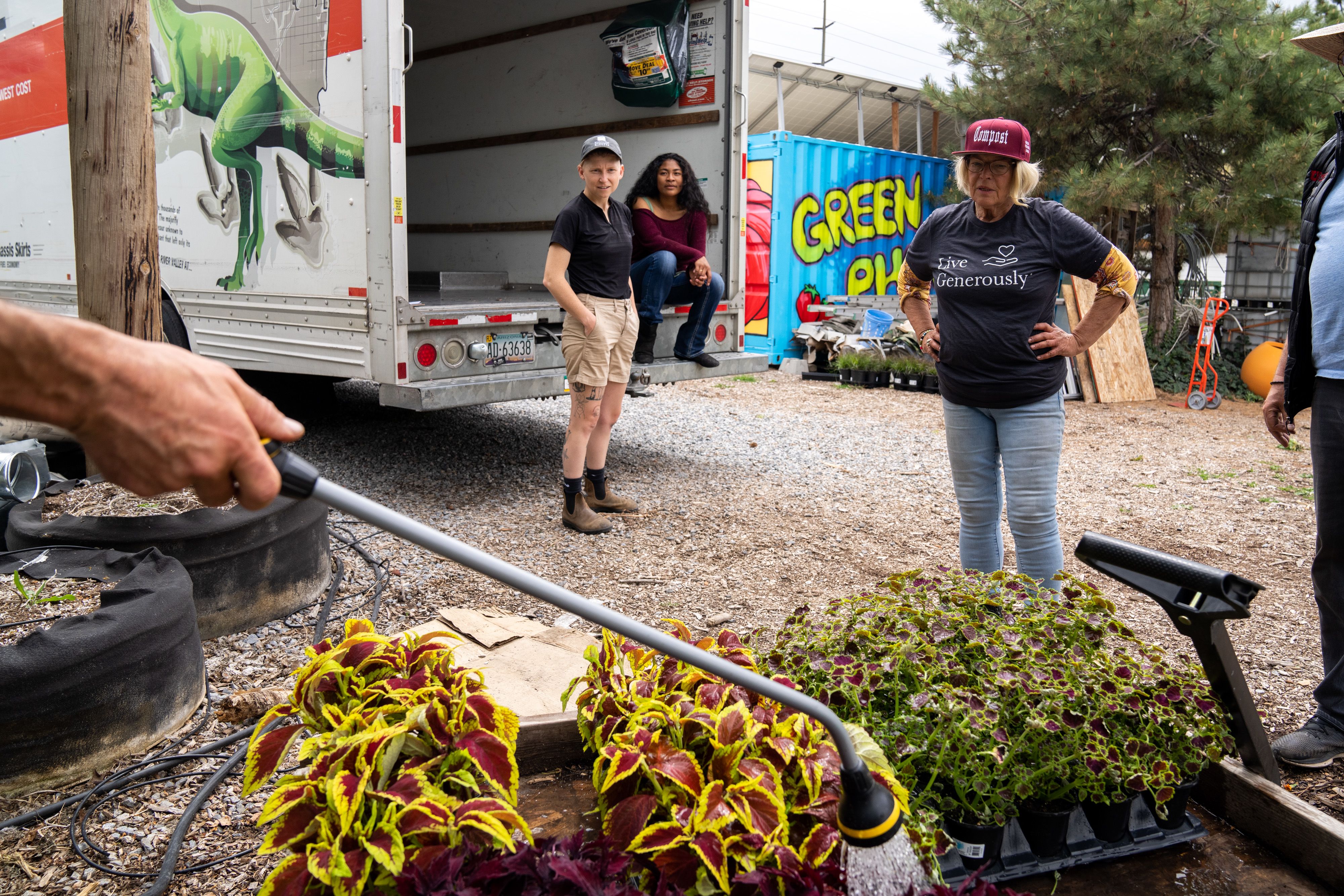
Walking in endless circles through or past the greenhouses, Loomis and staff handed out flats in alphabetical order by variety to the cohort, who then carried them to the U-Haul, where a Wasatch Community Gardens staff member ticked them off a list and slid them to the back. The plants would end up going home to 3,000 gardens across the Wasatch Front.
For the cohort, those plants represented more than just blossoming summer flower beds and vegetable patches. Janice had been withdrawn when she started at Wasatch Community Gardens’ Farm. But over time, her posture straightened, her manner became more direct, and her voice grew stronger. As compost captain one week, overseeing the layering and turning of the compost, she’d crack jokes, smiling at her colleagues and encouraging them to write things they wanted to let go of on small scraps of paper before adding them to the compost pile.
Farm staff says it’s these kinds of social, emotional, and behavioral improvements that rewire the brain for positive thinking.
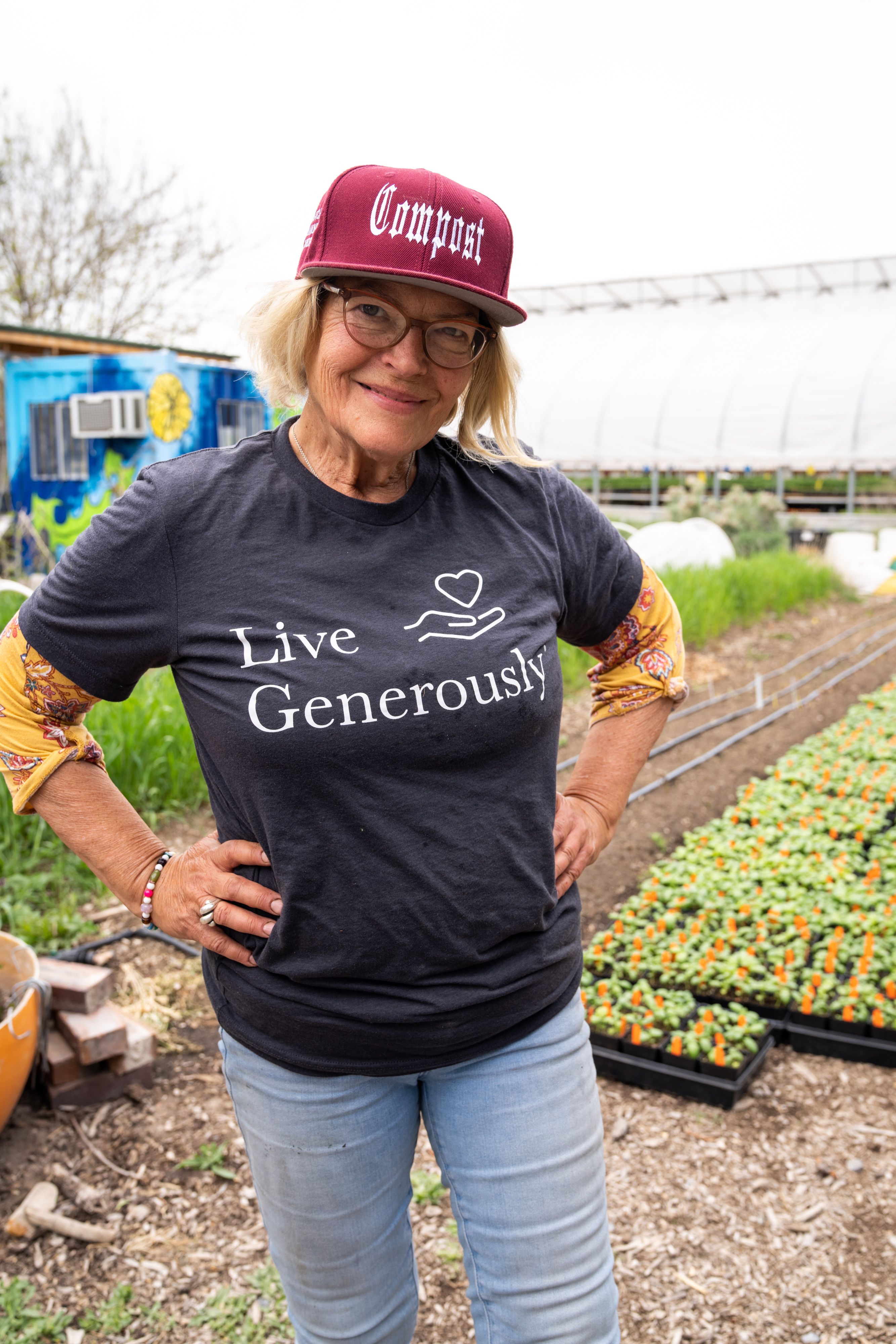

Staff and members of the 2022 Green Team celebrated with a graduation ceremony last June.
They built a mandala to represent their three months of hard work. The end of the growing season also marked a milestone on their personal journeys.

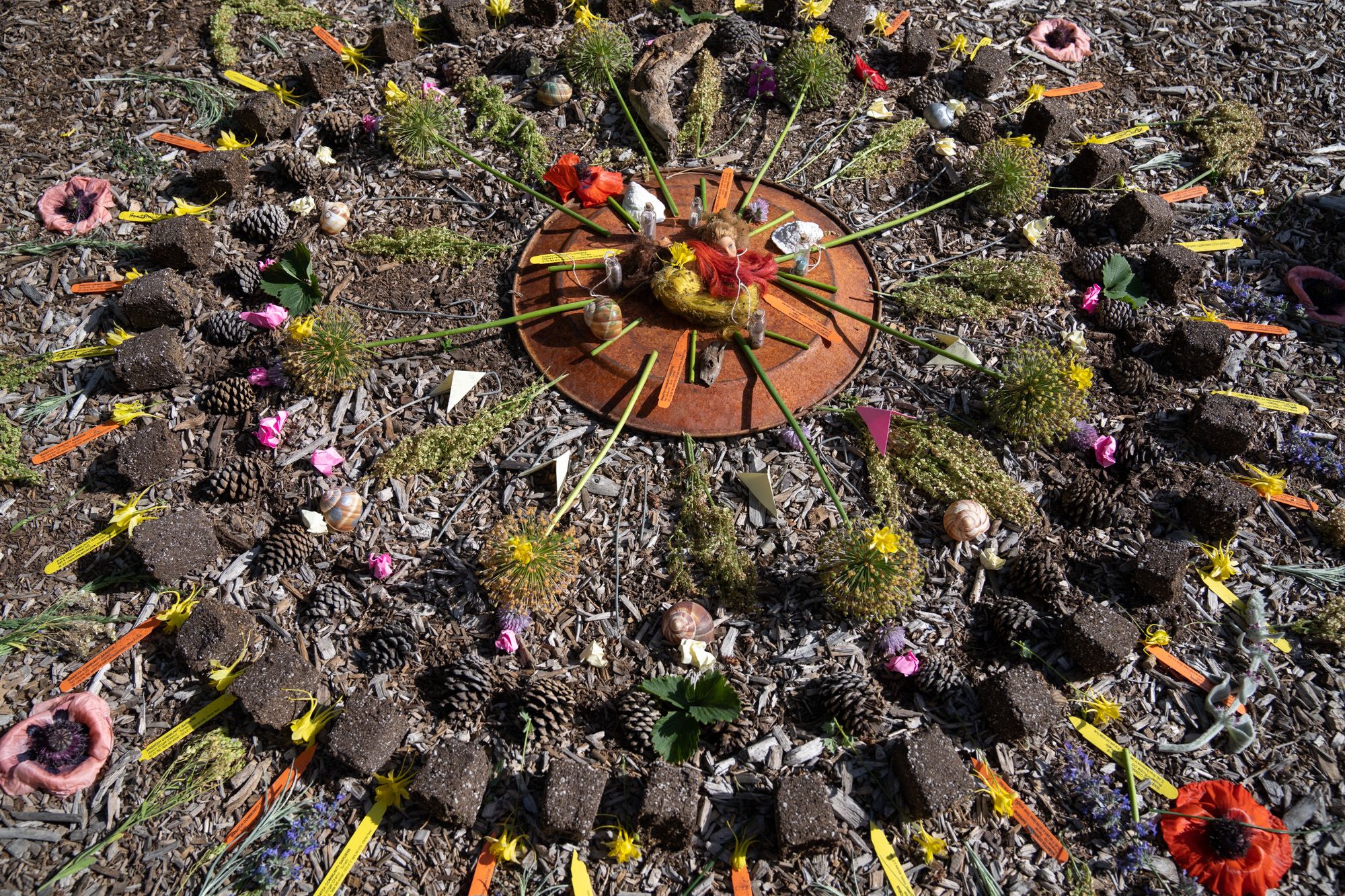

“I feel like I’m part of society again,” one of the women said.

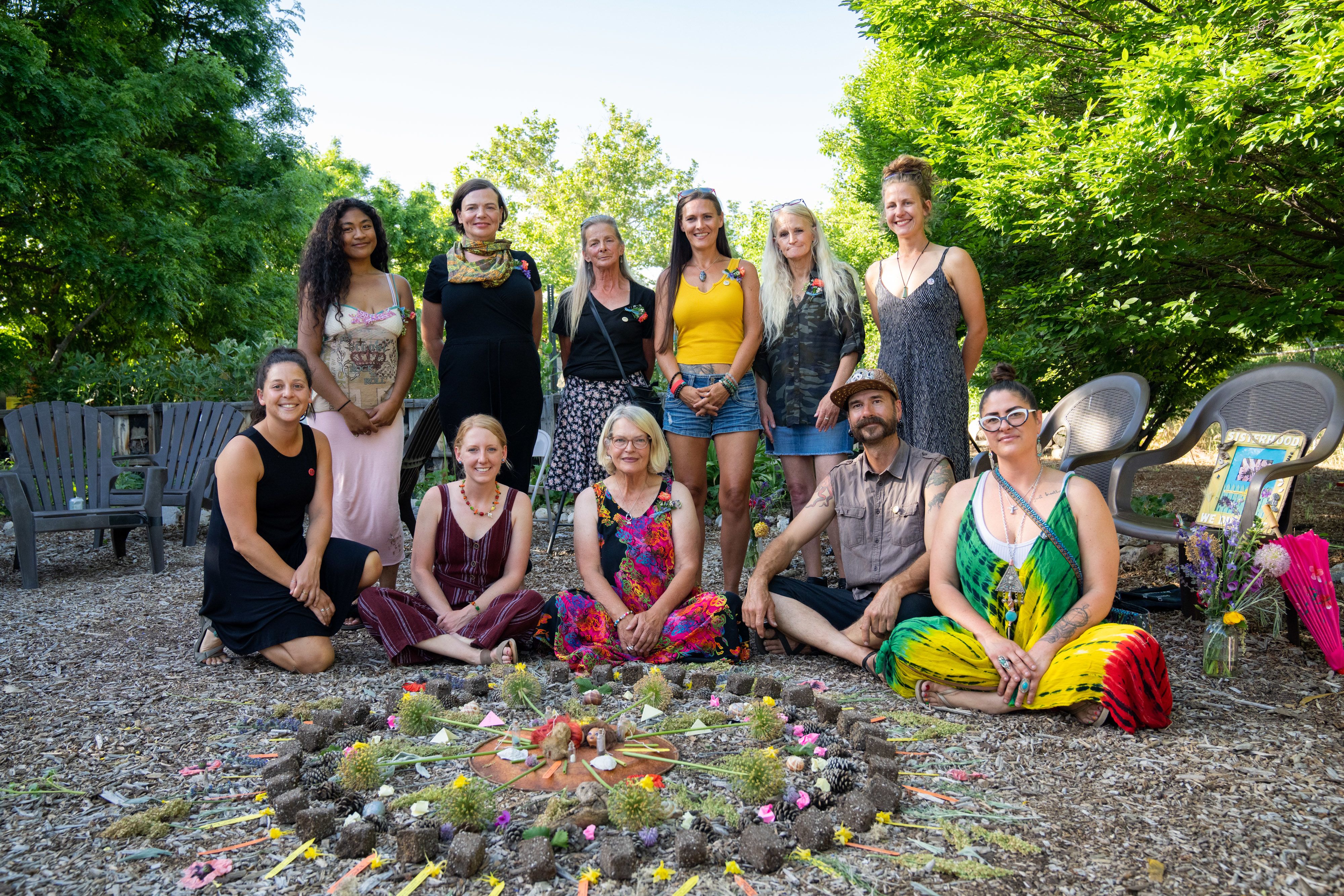
The full spring 2022 Green Team, including Lamoon Luia (back row, far left), Lynnette Burn (back row, third from left), Janice (front row, center), and James Loomis (front row, second from right).
The full spring 2022 Green Team celebrating with a graduation ceremony last June.
Story by Stephen Dark
Photography by Niki Chan Wylie
August 11, 2023
Design: Jesse Colby, Jessica Cagle
Editor: Nick McGregor
Publisher: Amy Albo
Personal photos of University of Utah College of Health staff and students at Palmer Court courtesy of Shannon Jones
